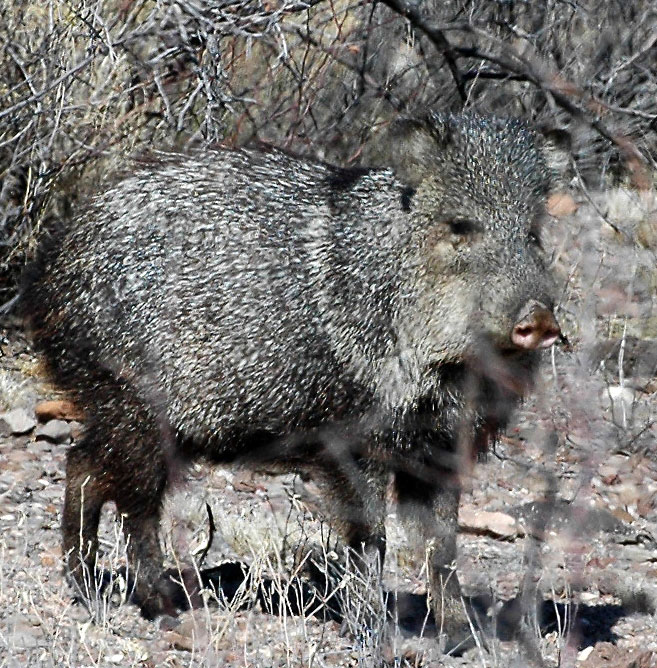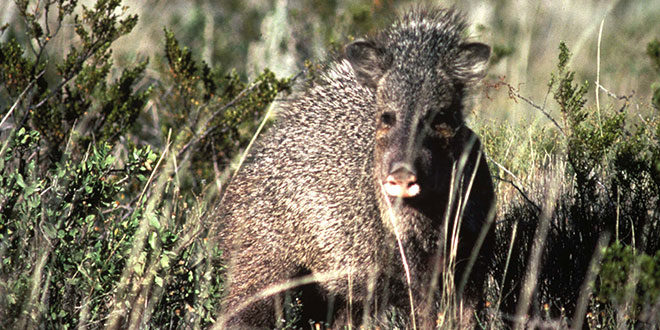Javelina, also known as the collared peccary because of the white collar around their neck, stand anywhere from 20-24 inches tall at the shoulder and weigh anywhere from 35-60 pounds. Although javelina have very poor eyesight, that doesn’t mean it will be easy to walk up on one to get a picture. Javelina are still good at making out movement – not to mention they have fair hearing and a great sense of smell.
Javelina prefer mesquite habitats with an abundance of prickly pear cactus, but can also be found in semi-desert canyons, cliffs and watering holes near cactus. These animals are primarily herbivorous – animals whose primary food source is plant-based – and like to travel in small family groups feeding on roots, insects, fruits, bulbs, beans, worms, invertebrates and reptiles.
New Mexico has a vast amount of public land where you can find javelina. With that in mind, here are a few good starting points. First are the Big Hatchets: these mountains are not only a long way from anywhere; they have excellent javelina habitat and are very easy to glass. Second are the Florida and Tres Hermanas mountains south of Deming. Both of these mountain ranges are very steep and rugged, but it’s the brush-filled sand washes at the bases that hold javelina. Hiking up the sides of these mountains provides a great place to sit and glass. Last is the Cedar mountain range just southwest of Deming.
The most important tool that someone wanting to see javelina can own is a good pair of optics. These animals love brush-filled sand washes along with cactus and mesquite flats, so the best way to spot one is by climbing up on a high spot and spending some time glassing the surrounding country.

Now that you have figured out a place to start, there are a few things that you should look for. People often mistake javelina tracks for deer, especially Coues deer, due to their small size. Javelina have two-toed front feet, three-toed behind. The third, vestigial dewclaw does not show in the tracks unless the track is in the mud. The front hoof is about 1-½ inches wide by 1-¼ inches in length, while the rear hoof is 1 ¼ inch wide by 1 inch in length. Track identification is essential to make sure you are following the correct animal. Another thing to look for is rooting areas. These rooting areas, depending on how fresh they are, can tell you if javelina are still in the area.
Oddly enough, javelina have been spotted as far north as Eldorado, just south of Santa Fe, and along the Rio Grande river at the Bernardo waterfowl complex just south of Albuquerque. So, if you want to see javelina in the wild but aren’t interested in driving that far south, who knows? In a few years they might become a regular occurrence in Albuquerque or Santa Fe.
 New Mexico Wildlife magazine Conserving New Mexico's Wildlife for Future Generations
New Mexico Wildlife magazine Conserving New Mexico's Wildlife for Future Generations
